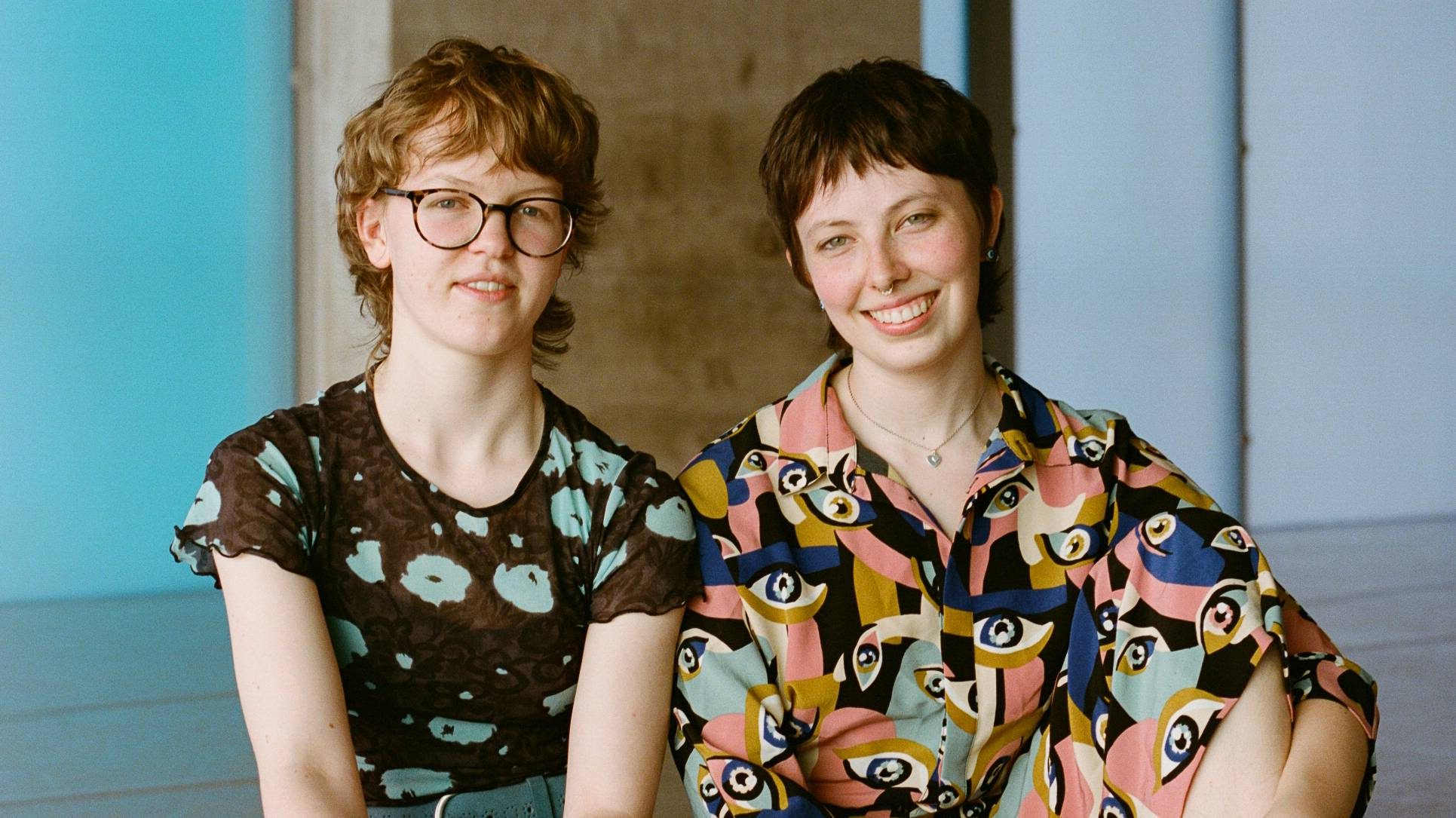
Seeing ‘Eye to Eye’: catching up with the founders of the collective, Caitlin Howe and Hope O’Brien
Eye to Eye is a collective that aims to create interdisciplinary art derived from research and social issues, particularly through a queer feminist lens. Working across dance, textiles, fine art and poetry, the collective believes a multimedia approach can build informative projects that speak to the complexity of human experiences. They want to utilise this range of skills to create safe spaces and open up conversations about challenging topics. Eye to Eye will be utilising the Trinity Laban Innovation Award to build a multimedia collection of research about consent.
Founders Caitlin Howe and Hope O’Brien recently graduated from the BA in Contemporary Dance at Trinity Laban. Caitlin is a Welsh dancer, choreographer, and visual artist working with movement textiles, and visual art. They are currently based in London, working as a part-time Library Assistant at Trinity Laban, but also working across Wales with different communities. Hope O’Brien is a multidisciplinary artist and is currently working as Graduate Intern in the Costume Department at Trinity Laban. Hope is passionate about exploring sociopolitical topics through art, as well as combining mediums such as dance, textiles, fashion, poetry, and film to create an all-encompassing experience. We talked to the founders about their mission and aspirations for Eye to Eye, as well as their contemporary dance projects at the conservatoire.
What’s the inspiration behind your collective Eye to Eye? Tell us about what motivated you to create it.
We wanted to create Eye to Eye together because we share a collaborative vision. Fun fact, Caitlin and I [Hope] are also the same height! So we see eye to eye in a physical sense as well as metaphorically, in our ideas and creative ventures. An important part of the collective is creating interdisciplinary work, we are both trained dancers but also work with visual arts, textiles, fashion, and poetry. We also have experience in working with communities and young people, all of which we wanted to highlight in our practice at Eye to Eye. We believe in creating work which explores difficult topics, and promotes education and thoughtfulness, in an inclusive and accessible manner.
Take us behind the scenes of the Consent Event; what are you currently planning?
Currently, we are in the research stage of our consent event project, gathering resources on consent, touch, art, and dance. Leading up to the event itself, we will be holding multi-disciplinary workshops for artists and educators to explore consent through their art form. Caitlin and I [Hope] will be exploring the topic through movement, this dance-based research will then be used to create a dance piece exploring consent, with three dancers. In the final Consent Event, we envisage art from the workshops existing in the space alongside the dance we create, working together to explore the idea of consent in an accessible and interdisciplinary way. We are super excited to start sharing the initial parts of this project soon!

During your time at Trinity Laban, how have different art forms influenced your contemporary dance practice?
I [Caitlin] have always worked from drawings first when choreographing movement. This is a way for me to process thoughts and visualise them when a new idea is forming. So drawing is often a starting point and a practice which I maintain alongside choreographing in order to develop my work. For my Independent Research Project in third year, I researched touch through moving and drawing, eventually creating multiple drawings and one big textile piece. I find it interesting to notice similarities between different artforms and during that research, I began to play with using various processes interchangeably. For example, I might take a choreographic approach to drawing, or I would choreograph by building layers of ‘marks’, using the same level of detail as I do when drawing. The idea of leaving marks behind when you move felt strongly connected to my questions around touch and consent and those are ideas that I intend to develop further in our research for this project, keeping a multidisciplinary approach. Hope has also explored other artforms during their degree, mainly working with textiles and fashion. They have researched how clothing allows or denies access to the body, how it affects a person’s movement and whether it changes someone’s autonomy over their body. In their final project, they researched pockets and created eight garments which were incorporated into their choreography or were a starting point for choreography.
You were both involved in the project “Is there a choice here”. Could you tell us more about this work?
This was Caitlin’s choreography created during third year which Hope performed in. It was a piece that followed on from a previous work called “This is my body” during which I [Caitlin] began to explore how touch could allow us to reclaim our bodies, celebrate our sensorial experience, and articulate boundaries that protect us. In “Is there a choice here”, we worked a lot more with contact between the dancers, exploring space, tension, and connection in order to create images of touch and consent which were more complex than simply a negative or positive experience. We were questioning how often there is truly a choice for each person in an interaction and how consent might be given, received, ignored, or acknowledged. This process gave me an insight as a choreographer into how consent might be communicated and maintained throughout a rehearsal and project and allowed us to create a supportive space for each dancer to feel empowered.


